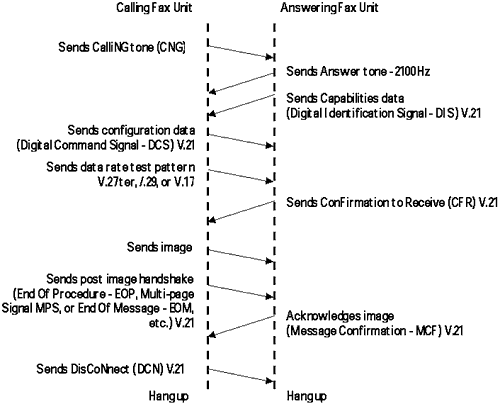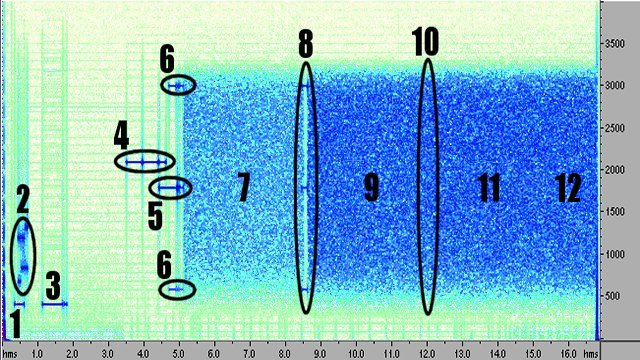
Before user data can be transmitted, handshaking must take place between the originating and answering modems or fax equipment. Using fax communication as an example, five distinct phases can be identified:
Phase A – Call establishment
Receiver number is dialed and a calling tone (CNG) is sent, and when the receiver goes off-hook it answers with an answer tone.
Phase B – Pre-message procedure
Using V.21, 300 bps FSK, capabilities, configuration and finally rate test signals are exchanged in HDLC frames.
Phase C – Message transmission
After the Confirmation-to-Receive signal has been received, the originator starts sending images.
Phase D – Post-message procedure
Originator sends a Return-To-Control signal switching both devices back to V.21, and the originator sends end-of-message signals. The answering equipment sends a Message Confirmation signal indicating that the message has been successfully received.

The illustration below is a time vs. frequency spectrum of a V.32 call.

1. PSTN dial tone
2. Calling modem DTMF
3. PSTN rings back tone
4. 2100 Hz phase reversal answer tone
5. 1800 Hz phase reversals tone (calling)
6. 600 + 3000 Hz phase reversals tone (answer)
7. Training sequence, half-duplex (answer)
8. Sync sequence (calling, answer)
9. Training sequence (calling)
10. Sync sequence full-duplex (calling, answer)
11. Second training sequence (answer)
12. User data